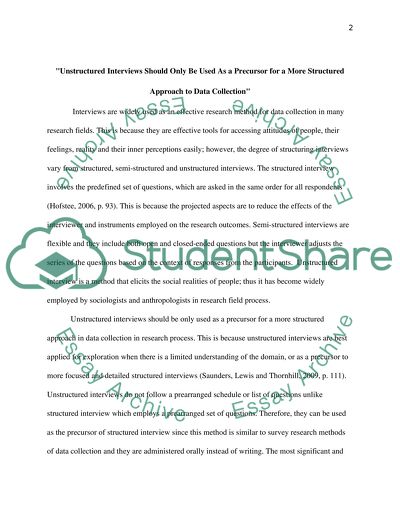Cite this document
(“- Research Methods - Discuss the following statement. Unstructured Essay”, n.d.)
- Research Methods - Discuss the following statement. Unstructured Essay. Retrieved from https://studentshare.org/miscellaneous/1623105-research-methods-discuss-the-following-statement-unstructured-interviews-should-only-be-used-as-a-precursor-for-a-more-structured-approach-to-data-collection
- Research Methods - Discuss the following statement. Unstructured Essay. Retrieved from https://studentshare.org/miscellaneous/1623105-research-methods-discuss-the-following-statement-unstructured-interviews-should-only-be-used-as-a-precursor-for-a-more-structured-approach-to-data-collection
(- Research Methods - Discuss the Following Statement. Unstructured Essay)
- Research Methods - Discuss the Following Statement. Unstructured Essay. https://studentshare.org/miscellaneous/1623105-research-methods-discuss-the-following-statement-unstructured-interviews-should-only-be-used-as-a-precursor-for-a-more-structured-approach-to-data-collection.
- Research Methods - Discuss the Following Statement. Unstructured Essay. https://studentshare.org/miscellaneous/1623105-research-methods-discuss-the-following-statement-unstructured-interviews-should-only-be-used-as-a-precursor-for-a-more-structured-approach-to-data-collection.
“- Research Methods - Discuss the Following Statement. Unstructured Essay”, n.d. https://studentshare.org/miscellaneous/1623105-research-methods-discuss-the-following-statement-unstructured-interviews-should-only-be-used-as-a-precursor-for-a-more-structured-approach-to-data-collection.


